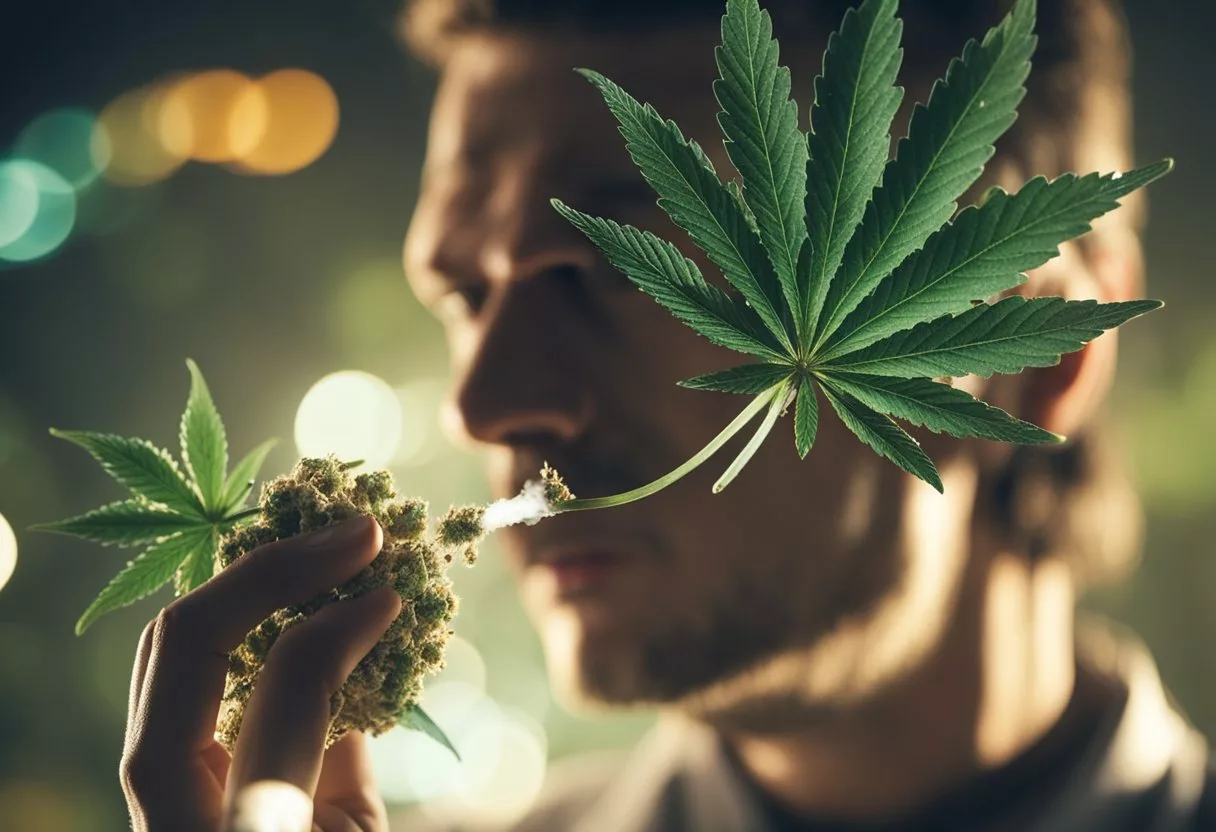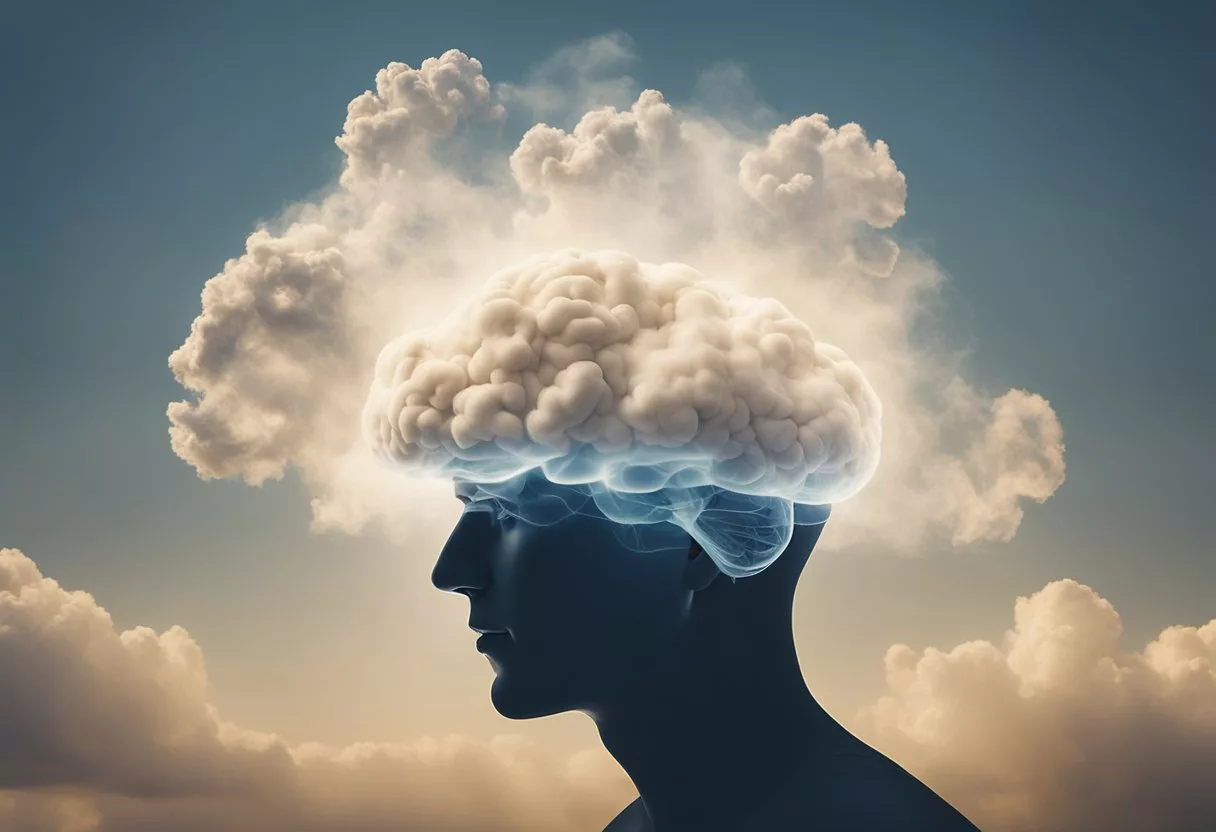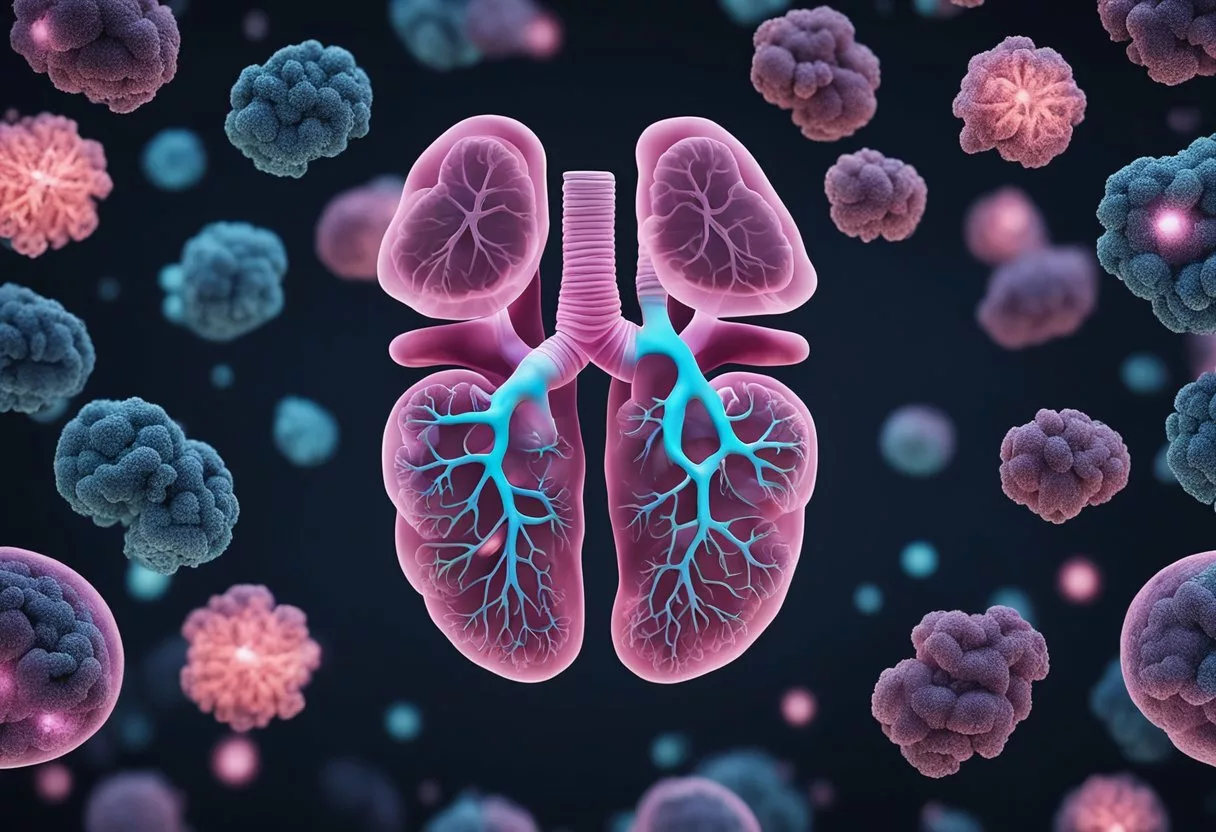Smoking weed has become increasingly popular in recent years, with more and more people turning to the drug for recreational or medicinal purposes. While occasional use is generally considered safe, what happens to your body if you smoke weed every day?

Cannabis, the plant from which weed is derived, contains a psychoactive compound called delta-9-tetrahydrocannabinol (THC). When smoked, THC enters the bloodstream and travels to the brain, producing a range of physical and psychological effects. While these effects can be enjoyable in the short term, frequent use of weed can have negative consequences on both the mind and body.
Long-term effects of daily weed use can include respiratory problems, such as chronic bronchitis and lung infections. Additionally, regular use of marijuana can lead to addiction, causing users to experience withdrawal symptoms when they stop using the drug. In this section, we will explore the effects of smoking weed every day, and what it can do to the body over time.
Understanding Cannabis and THC

Chemical Composition of Cannabis
Cannabis, also known as marijuana, is a plant that contains over 100 different cannabinoids, including THC (tetrahydrocannabinol) and CBD (cannabidiol). THC is the psychoactive compound in cannabis that produces the feeling of being “high,” while CBD is non-psychoactive and does not produce the same effects.
The concentration of THC in cannabis can vary widely depending on the strain and how it is grown, harvested, and processed. Some strains of cannabis have a higher THC content than others, with some strains containing up to 30% THC.
THC and Its Effects on the Brain
When THC is consumed, it binds to cannabinoid receptors in the brain, which are part of the endocannabinoid system. This system plays a role in regulating various bodily functions, such as mood, appetite, and pain sensation.
The binding of THC to these receptors can lead to a range of effects on the brain, including altered perception, impaired coordination, and changes in mood. THC can also affect memory and learning, particularly when used regularly over a long period of time.
Regular use of THC can also lead to tolerance, meaning that higher doses are needed to achieve the same effects. This can increase the risk of dependence and addiction, as well as other negative consequences such as impaired driving and increased risk of mental health problems.
Overall, while cannabis has potential therapeutic benefits, it is important to understand the chemical composition of the plant and the effects of THC on the brain before using it regularly.
Short-Term Physical Effects of Cannabis
Cannabis is known for its psychoactive effects, but it also has short-term physical effects on the body. These effects can vary depending on the individual, the method of consumption, and the potency of the cannabis. In this section, we will discuss the short-term physical effects of cannabis and their impact on the body.
Immediate Impact on Heart Rate
One of the most noticeable short-term physical effects of cannabis is an increase in heart rate. According to a study published by the American Heart Association, “smoking marijuana can cause an almost immediate increase in heart rate that can last for up to three hours.” This increase in heart rate can be dangerous for individuals with pre-existing heart conditions.
Effects on the Lungs and Breathing
Smoking cannabis can also have negative effects on the lungs and respiratory system. The smoke from cannabis contains many of the same harmful chemicals as tobacco smoke, including tar and carbon monoxide. This can lead to bronchitis, coughing, and wheezing. Inhaling cannabis smoke can also cause shortness of breath and chest tightness.
Changes in Blood Pressure and Bloodstream
Cannabis can also have an impact on blood pressure and the bloodstream. According to a study published in the European Heart Journal, “cannabis use can cause an increase in blood pressure and heart rate, and can also cause blood vessels to dilate.” This can lead to a drop in blood pressure, which can cause dizziness and lightheadedness.
In addition, cannabis can affect the bloodstream by increasing the level of THC in the bloodstream. This can lead to a feeling of relaxation and euphoria, but it can also impair cognitive function and motor skills.
Overall, the short-term physical effects of cannabis can be both positive and negative. While some individuals may experience relaxation and pain relief, others may experience negative effects on their heart rate, lungs, and blood pressure. It is important to be aware of these effects and to use cannabis responsibly.
Cognitive and Psychological Effects

Memory and Learning Impairments
Long-term cannabis use has been found to impact midlife cognition, particularly in the areas of memory and learning. Heavy long-term cannabis use can lead to cognitive decline later in life, similar to those that predict steeper cognitive decline later in life. [1][1]
Mental Health Risks
Marijuana use has been linked to an increased risk of mental health issues, including depression, anxiety, and psychosis. While some studies have shown that marijuana use can have beneficial effects on mental health, particularly in older adults, the risks of long-term use are still unclear. [2][2]
Altered Perception and Coordination
Marijuana use can lead to altered perception and coordination, which can impair a person’s ability to perform daily activities such as driving or operating machinery. This is because marijuana affects the areas of the brain that control movement, balance, and coordination. [3][3]
In conclusion, long-term cannabis use can have negative cognitive and psychological effects, including memory and learning impairments, mental health risks, and altered perception and coordination. It’s important to weigh the potential risks and benefits of marijuana use and to use it responsibly.
References:
- Meier, M. H., Caspi, A., Ambler, A., Harrington, H., Houts, R., Keefe, R. S. E., … & Moffitt, T. E. (2012). Persistent cannabis users show neuropsychological decline from childhood to midlife. Proceedings of the National Academy of Sciences, 109(40), E2657-E2664.
- American Psychological Association. (2023, June). How does marijuana affect the brain? Psychological researchers examine the latest findings. Monitor on Psychology. https://www.apa.org/monitor/2023/06/marijuana-effects-brain[2]
- WebMD. (n.d.). Effects of Marijuana Use: How Weed Affects Your Mind and Body. https://www.webmd.com/mental-health/addiction/marijuana-use-and-its-effects[3]
Impact on Mental Health Disorders

Association with Anxiety and Depression
There is some evidence to suggest that smoking weed every day may increase the risk of developing anxiety and depression. According to a WebMD article[3], some people who use marijuana may experience feelings of anxiety or paranoia, especially if they use high doses or strains that are high in THC. However, it is important to note that the relationship between marijuana use and anxiety and depression is complex and not fully understood. While some studies have found an association between marijuana use and increased risk of anxiety and depression, other studies have found no such association.
Link to Schizophrenia and Psychosis
There is also some evidence to suggest that smoking weed every day may increase the risk of developing schizophrenia and other psychotic disorders. According to a CDC article[4], people who use marijuana are more likely to develop psychosis, which is a condition characterized by hallucinations, delusions, and disordered thinking. However, it is important to note that the relationship between marijuana use and schizophrenia and other psychotic disorders is not fully understood. While some studies have found an association between marijuana use and increased risk of schizophrenia and other psychotic disorders, other studies have found no such association.
In addition to these potential risks, smoking weed every day may also cause mood changes and other mental health effects. It is important to speak with a healthcare provider if you are concerned about the impact of marijuana use on your mental health.
Long-Term Health Consequences

Respiratory Issues from Smoking
Smoking weed can lead to respiratory issues, particularly when it is smoked as opposed to consumed in other ways. The smoke from marijuana contains many of the same harmful chemicals as tobacco smoke, including tar, carbon monoxide, and ammonia. These chemicals can irritate the lungs and cause inflammation, leading to chronic bronchitis and other respiratory problems.
Potential for Addiction and Withdrawal
While marijuana is not as addictive as other substances like nicotine or opioids, it can still lead to addiction in some individuals. Long-term use of marijuana can lead to changes in the brain that make it more difficult to quit using the drug. Withdrawal symptoms can include irritability, insomnia, loss of appetite, and anxiety.
Impact on Brain Development and IQ
Research suggests that smoking weed regularly can have negative effects on brain development, particularly when use begins in adolescence when the brain is still developing. Long-term use of marijuana can lead to a decrease in IQ and other cognitive impairments.
It is important to note that while these long-term health consequences are possible, they do not affect everyone who uses marijuana. The severity of these effects can also vary depending on factors such as the frequency and duration of use, the method of consumption, and individual differences in biology and genetics.
Effects on Specific Populations
Cannabis Use During Pregnancy
Using cannabis during pregnancy may have negative effects on the developing fetus. According to a study published in the Journal of the American Medical Association, babies born to mothers who used cannabis during pregnancy were more likely to be born with a low birth weight. Additionally, these babies were more likely to require neonatal intensive care unit (NICU) admission.
Influence on Adolescent Users
Adolescents who use cannabis regularly may experience negative effects on their cognitive development. According to a study published in the Journal of Neuroscience, adolescent cannabis users had lower scores on tests of memory, attention, and processing speed compared to non-users. Additionally, regular cannabis use during adolescence has been associated with an increased risk of developing psychotic disorders, such as schizophrenia.
Risks for Older Adults and Preexisting Conditions
Older adults and individuals with preexisting medical conditions may be at increased risk of negative health effects from cannabis use. For example, cannabis use can increase heart rate and blood pressure, which may be dangerous for individuals with heart disease. Additionally, cannabis smoke contains many of the same harmful chemicals as tobacco smoke, which may increase the risk of lung cancer.
It is important to note that more research is needed to fully understand the effects of cannabis use on specific populations. Individuals who are pregnant, have preexisting medical conditions, or are taking medications should speak with their healthcare provider before using cannabis.
Cannabis Use Disorder and Treatment
Identifying Cannabis Use Disorder
Cannabis Use Disorder (CUD) is a recognized condition that occurs when an individual becomes addicted to cannabis. It is characterized by a pattern of cannabis use that leads to significant impairment or distress. Symptoms of CUD include using cannabis more often than intended, failing to cut down or control use, spending a lot of time using cannabis, and experiencing cravings for the drug.
Other signs of CUD include continuing to use cannabis despite social, work, or relationship problems caused by the substance. Individuals with CUD may also experience physical or psychological withdrawal symptoms when they try to stop using cannabis. These symptoms can include irritability, insomnia, decreased appetite, and restlessness.
Approaches to Treatment and Recovery
Treating CUD can involve a range of approaches, including behavioral therapies, medications, and support groups. Behavioral therapies such as Cognitive Behavioral Therapy (CBT) and Motivational Enhancement Therapy (MET) have been shown to be effective in treating CUD. These therapies aim to help individuals change their behavior and develop coping strategies to manage cravings and avoid relapse.
Medications such as Naltrexone and Bupropion have also been used to treat CUD. These medications can help to reduce cravings and prevent relapse. Support groups such as Marijuana Anonymous can provide individuals with a safe and supportive environment to share their experiences and receive support from others who have struggled with CUD.
It is important to note that recovery from CUD is a lifelong process. While treatment can be effective in helping individuals manage their addiction and avoid relapse, it is not a cure. Individuals with CUD may need ongoing support and treatment to maintain their sobriety and prevent relapse.
In summary, identifying and treating CUD is an important step in helping individuals overcome addiction and achieve long-term recovery. With the right treatment and support, individuals with CUD can successfully manage their addiction and lead healthy, fulfilling lives.
Medical Cannabis and Therapeutic Uses

Cannabis for Pain Relief and Chemotherapy
Medical marijuana has been used for pain relief for centuries. Cannabinoids, the active compounds in cannabis, have been shown to have analgesic effects and can provide relief for chronic pain conditions such as neuropathic pain, fibromyalgia, and arthritis. In addition, medical cannabis has been found to be effective in the management of pain associated with chemotherapy. A study published in the Journal of Pain and Symptom Management found that medical cannabis use significantly reduced pain and nausea in cancer patients undergoing chemotherapy.
Cannabis in Treating Epilepsy and Multiple Sclerosis
Medical cannabis has also been found to be effective in the treatment of epilepsy and multiple sclerosis. Cannabidiol (CBD), a non-psychoactive compound found in cannabis, has been shown to reduce the frequency and severity of seizures in patients with epilepsy. In addition, medical marijuana has been found to be effective in reducing spasticity and pain in patients with multiple sclerosis.
Research on the therapeutic uses of medical marijuana is ongoing, and more studies are needed to fully understand the potential benefits and risks. However, the evidence suggests that medical cannabis can be an effective treatment for a variety of conditions, including pain relief, nausea and vomiting, chemotherapy, epilepsy, and multiple sclerosis.
It is important to note that while medical marijuana may provide relief for some individuals, it is not a cure-all and should be used in conjunction with other medical treatments as prescribed by a healthcare professional. Additionally, medical marijuana should only be used under the guidance of a healthcare professional and in compliance with state laws and regulations.
Comparative Risks with Other Substances
Cannabis vs. Tobacco and Alcohol
Compared to tobacco and alcohol, cannabis is generally considered to be less harmful. According to the Centers for Disease Control and Prevention (CDC), tobacco use is the leading cause of preventable disease and death in the United States, while alcohol is responsible for approximately 88,000 deaths each year. In contrast, there have been no reported deaths from cannabis use alone.
However, smoking cannabis can still have negative effects on the respiratory system. Smoking any substance, including cannabis, can cause lung damage, chronic bronchitis, and other respiratory problems. Additionally, smoking cannabis can lead to addiction, impaired driving, and other negative consequences.
Cannabis and Prescription Drug Interactions
Cannabis can interact with prescription drugs, which can lead to potentially dangerous side effects. For example, cannabis can increase the sedative effects of certain medications, such as benzodiazepines and opioids. This can increase the risk of overdose and other negative consequences.
Cannabis can also interact with medications that are processed by the liver. Cannabis use can increase the activity of liver enzymes, which can cause certain medications to be metabolized more quickly than usual. This can reduce the effectiveness of some medications, such as some antidepressants and antipsychotics.
It is important for individuals who use prescription medications to talk to their doctor before using cannabis. They should also be aware of the potential risks and side effects associated with cannabis use.
Legal and Social Considerations
Legality and Access to Cannabis
The legality of cannabis varies widely across the world. In some countries, cannabis is legal for both recreational and medicinal purposes, while in others it is illegal for any use. In the United States, cannabis is still illegal at the federal level, but many states have legalized it for medicinal and/or recreational use. This has created a patchwork of laws and regulations that can be confusing for consumers.
Access to cannabis can also vary widely depending on where you live. In some places, it is easy to obtain cannabis through dispensaries or other legal channels. In other places, it may be difficult or impossible to obtain cannabis legally. This can create a situation where people turn to the black market to obtain cannabis, which can be dangerous and lead to legal problems.
Social Impacts and Perception of Risk
The social impacts of cannabis use can also vary widely depending on where you live. In some places, cannabis use is widely accepted and even celebrated. In other places, it is stigmatized and can lead to social ostracism.
The perception of risk associated with cannabis use can also vary widely. Some people believe that cannabis is a harmless substance that should be legal for any use, while others believe that it is a dangerous drug that should be banned. The truth is likely somewhere in between. While cannabis is generally considered to be less dangerous than many other drugs, it can still have negative health effects and should be used responsibly.
Overall, the legal and social considerations surrounding cannabis use are complex and can vary widely depending on where you live. It is important to be aware of the laws and regulations in your area, as well as the social attitudes towards cannabis use. By doing so, you can make informed decisions about your own cannabis use and avoid any legal or social problems.
Conclusion
Regular marijuana use can have both short-term and long-term effects on the body. Short-term effects include altered perception, impaired coordination, and increased heart rate. Long-term effects can include respiratory problems, decreased cognitive function, and addiction.
It is important to be aware of the potential health effects of cannabis use and to educate oneself on the risks and benefits. While some studies suggest that cannabis may have medical benefits, more research is needed to fully understand its effects on the body.
Prevention and awareness are key in reducing the negative health effects of marijuana use. This includes educating individuals on the risks of regular use, promoting safe and responsible use, and providing resources for those who may be struggling with addiction.
Overall, while marijuana use may be legal in some areas, it is important to approach it with caution and to prioritize one’s health and well-being.
References
- How Long-Term Cannabis Use Can Influence Cognitive Decline. https://www.psychologytoday.com/us/blog/healing-from-addiction/202303/long-term-cannabis-use-cognition-and-the-hippocampus Accessed October 25, 2025
- How does marijuana affect the brain? Psychological researchers examine impact on different age groups over time. https://www.apa.org/monitor/2023/06/marijuana-effects-brain Accessed October 25, 2025
- Marijuana: Effects on the Body. https://www.webmd.com/mental-health/addiction/marijuana-use-and-its-effects Accessed October 25, 2025
- Cannabis and Mental Health | Cannabis and Public Health. https://www.cdc.gov/cannabis/health-effects/mental-health.html Accessed October 25, 2025
